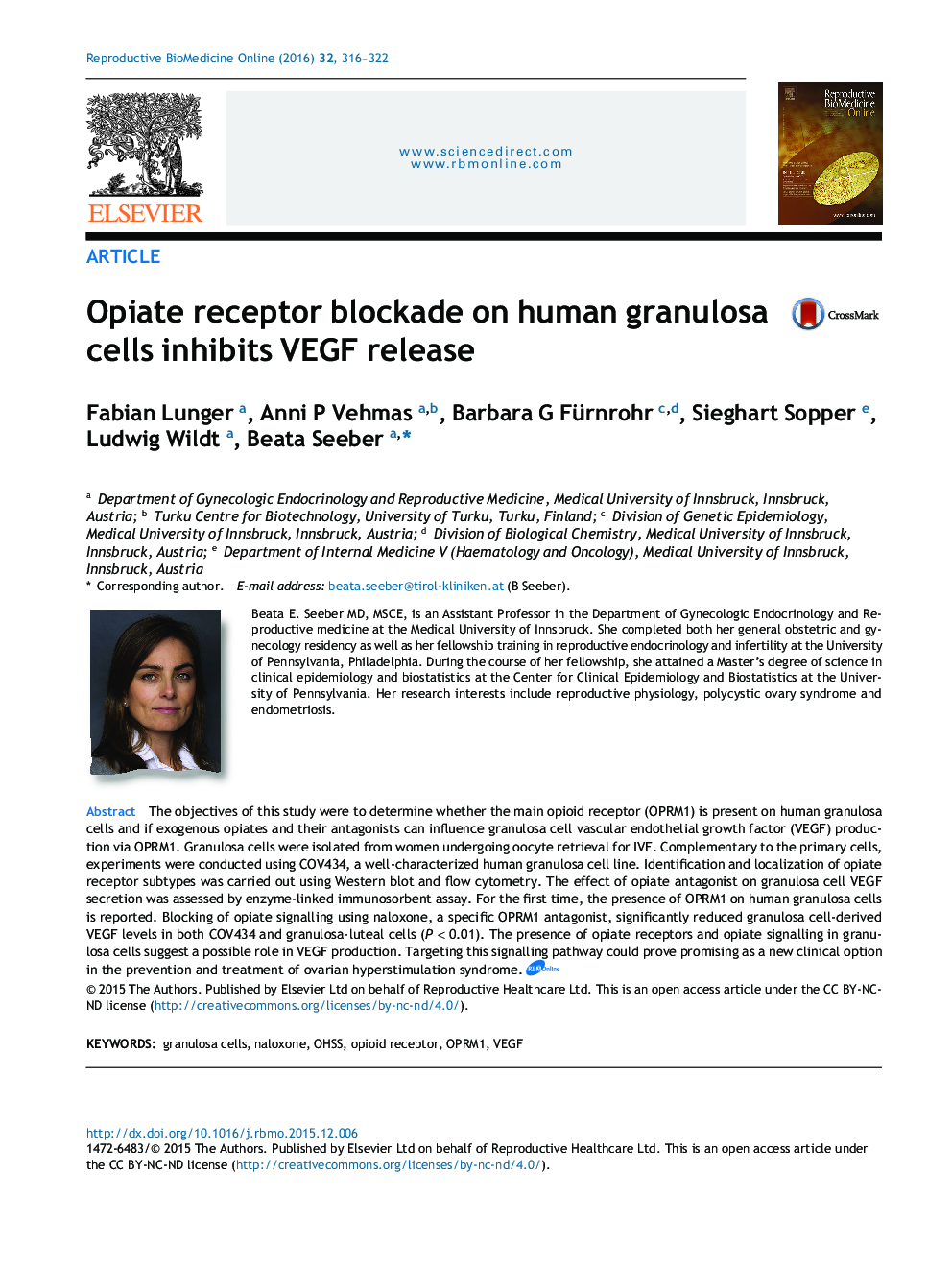| Article ID | Journal | Published Year | Pages | File Type |
|---|---|---|---|---|
| 6188558 | Reproductive BioMedicine Online | 2016 | 7 Pages |
The objectives of this study were to determine whether the main opioid receptor (OPRM1) is present on human granulosa cells and if exogenous opiates and their antagonists can influence granulosa cell vascular endothelial growth factor (VEGF) production via OPRM1. Granulosa cells were isolated from women undergoing oocyte retrieval for IVF. Complementary to the primary cells, experiments were conducted using COV434, a well-characterized human granulosa cell line. Identification and localization of opiate receptor subtypes was carried out using Western blot and flow cytometry. The effect of opiate antagonist on granulosa cell VEGF secretion was assessed by enzyme-linked immunosorbent assay. For the first time, the presence of OPRM1 on human granulosa cells is reported. Blocking of opiate signalling using naloxone, a specific OPRM1 antagonist, significantly reduced granulosa cell-derived VEGF levels in both COV434 and granulosa-luteal cells (P < 0.01). The presence of opiate receptors and opiate signalling in granulosa cells suggest a possible role in VEGF production. Targeting this signalling pathway could prove promising as a new clinical option in the prevention and treatment of ovarian hyperstimulation syndrome.
